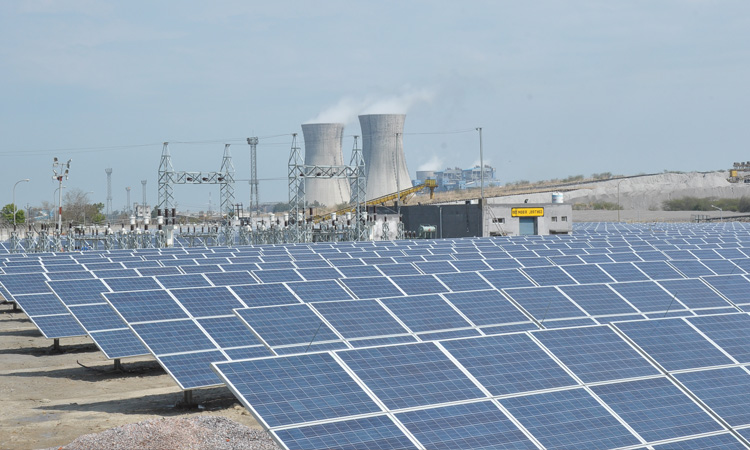India would need to generate at least 83% of its electricity from renewable energy sources (non-hydropower) by 2050, if it were to achieve net-zero greenhouse gas emissions by the year 2050, according to a report released today by the Council on Energy, Environment and Water (CEEW).
This would mean a massive 55-fold increase in the use of non-hydro renewables in electricity generation within the coming three decades, from only 160 TWh (10%) in 2019, the report stated.
The report estimated that to achieve net-zero by 2050, over two-thirds of India’s industrial energy use and new vehicle sales would have to be electrified, compared to a 20.3% share of electricity in industrial energy use and negligible share in transport energy use as of now.
“The share of electricity in India’s industrial energy use must rise three-fold, from 20.3% in 2018 to 70% in 2050. The share of electric vehicles in passenger car sales would also have to rise to 76% in 2050 from just 0.1% in 2019,” it stated.
To meet net-zero, India would need to either eliminate greenhouse gas (GHG) emissions or balance these by sequestering GHG emissions, the report said.
The CEEW study outlines multiple pathways for India to attain net-zero emissions, presenting four alternative scenarios: 2030 peak–2050 net-zero, 2030 peak–2060 net-zero, 2040 peak–2070 net-zero, and 2050 peak–2080 net-zero.
It said that India would need to reach peak emissions (the highest level before starting to fall) within this decade if it were to achieve net-zero emissions by mid-century.
Feasibility
The report stated 2030 as a peaking year would give India an extremely narrow (20-year) window to ensure a smooth and equitable transition to a net-zero year. In comparison, advanced economies, including China, Japan, the UK, and the USA, will have taken at least 30, and at times well over 40 years for this transition. Advanced economies peaked emissions at much higher development levels, slower rates of growth and would have had longer transition periods.
The CEEW study also found that if India were to peak in 2030 and reach net-zero in 2060 like China, its cumulative carbon emissions for 2021-2100 would be 80 GtCO2. For the same period, China and the USA’s cumulative carbon emissions, even after incorporating their net-zero ambitions, would be 349 GtCO2 and 104 GtCO2, respectively.
The report presents key considerations in selecting peaking and net-zero years for India to get sufficient time to develop while ensuring minimal climate impact. These include the average per capita income, economic growth rate, a ‘reasonable’ pace of transition determined by the gap between peaking and net-zero years, the possibility of lock-ins and stranded assets, the cumulative emissions across the alternative peaking year–net-zero year combinations, and the economic trade-offs.
Dr Vaibhav Chaturvedi, Fellow, CEEW, and author of the study, said, [their] analysis is intended to provide policymakers with different options in making a critical decision for India’s future.
“We find that India would need to undergo a double transition, through faster electrification of sectors and an increasing share of renewables in power generation, if it were to announce an ambitious net-zero target. Policymakers would also need to identify manufacturing sectors where electricity could replace fossil fuels. Reducing the cost of electricity to make it competitive would be equally critical. Finally, the rate of decline in India’s emission intensity of primary energy would have to be ramped up drastically to peak within the coming two decades,” he added.
Dr Arunabha Ghosh, CEO, CEEW, said, “India has already demonstrated climate leadership and is the only G20 nation on track to surpass its Paris Agreement targets. However, if India were to announce a net-zero target, it must choose a year that not only minimizes climate impacts but also gives it enough space to develop.
“Achieving net-zero emissions by 2050 or 2060 would need rapid systemic changes across all sectors and sections of society. This, in turn, would require significant international financial investments and technological transfer from or technology co-development with the developed world. It would be equally important for India to closely examine trade-offs such as increasing cost of household electricity, increasing railways passenger fares, fiscal challenges for coal-dependent states, job losses for over half a million coal mining workers, and the shifting geopolitics around energy trade and the energy transition before announcing its net-zero targets.”
This content is protected by copyright and may not be reused. If you want to cooperate with us and would like to reuse some of our content, please contact: editors@pv-magazine.com.








By submitting this form you agree to pv magazine using your data for the purposes of publishing your comment.
Your personal data will only be disclosed or otherwise transmitted to third parties for the purposes of spam filtering or if this is necessary for technical maintenance of the website. Any other transfer to third parties will not take place unless this is justified on the basis of applicable data protection regulations or if pv magazine is legally obliged to do so.
You may revoke this consent at any time with effect for the future, in which case your personal data will be deleted immediately. Otherwise, your data will be deleted if pv magazine has processed your request or the purpose of data storage is fulfilled.
Further information on data privacy can be found in our Data Protection Policy.